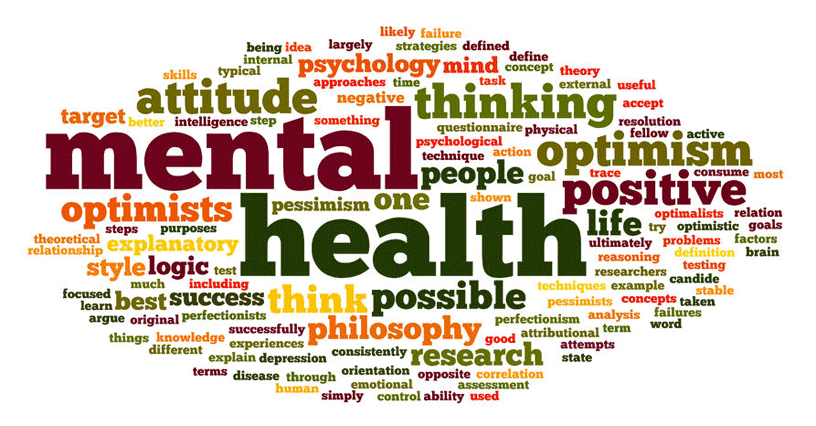
"If you can make it through the night, there's a brighter day." ~Tupac Shakur
Since 1992, October 10th has been recognized as World Mental Health Day. This day was established by the World Health Federation to reduce social stigma, increase mental health education, and raise awareness about various forms of mental illness.
As defined by the Centers for Disease Control (CDC), mental health is “a state of well-being in which the individual realizes his or her own abilities, can cope with the normal stresses of life, can work productively and fruitfully, and is able to make a contribution to his or her community.”
Estimates suggest only about 17% of adults in the U.S. are functioning at an optimal state of mental health.
Frequently, but incorrectly interchanged with mental health, mental illness as defined by the CDC is “health conditions that are characterized by alterations in thinking, mood, or behavior (or some combination thereof) associated with distress and/or impaired functioning.”
According to the National Institute of Mental Health (NIMH), the most common mental illness in the U.S. is Major Depressive Disorder, which affects nearly 7% of the population, or 14.8 million adults over age 18 each year. Anxiety disorders, which include posttraumatic stress disorder, panic attacks, obsessive-compulsive disorder, and specific phobias, have affected 18.1% of Americans.
Despite the prevalence of mental illness in this country, it remains a subject area that garners more questions than answers. The social stigma or shame often associated with having a mental illness is perpetuated by this lack of understanding. History also reveals that some of this stigma evolved for good reason, as past treatment of mental illness has included skull drills, electro-shock therapy, and commitment to asylums. Even beyond treatment, individuals with a mental illness are discriminated against in hiring and housing practices, and even ostracized by friends and family. All reasons why World Mental Health Day remains relevant.
The following are 5 facts about mental health and mental illness in America to spark discussion on this October 10th:
Half of all chronic mental illness begins by age 14; three-quarters by age 24.
While symptoms begin in adolescents and early adulthood, many years may pass before a person first seeks help for a mental illness, with just over half (50.6%) of children aged 8-15 receiving mental health services in the previous year. This suggests that early intervention and even preventative measures in childhood could positively influence the long-term mental health of adults in the U.S.
Suicide is the 10th leading cause of death in the U.S., the 3rd leading cause of death for people aged 10–14, and the 2nd leading cause of death for people aged 15–24.
Suicide is the intentional act of causing one’s own death, with firearms being the most common method in death by suicide. White males accounted for 7 of 10 suicides in 2015, however suicide is now the 3rd leading cause of death for African Americans between 15 and 24. Between 1993 and 2013 death by suicide for African American children 5 to 11 doubled. It is estimated that 18-22 veterans die by suicide daily.
Within the public health sector, the screening, diagnosis, and treatment of mental illness receives more resources than the promotion of mental health.

Mental health is the emotional (e.g. perceived life satisfaction), psychological (e.g. hopefulness), and social (e.g. self-worth) well-being of a person. Mental health is the ideal; however only 17% of the population fit these criteria. As compared to mental illness, research which focuses on the protection of mental health is not as prevalent. According to the previous surgeon general, social determinants including adequate housing, equitable wages and jobs, and safe neighborhoods foster mental health.
Approximately 20% of state prisoners and 21% of local jail prisoners have “a recent history” of a mental health condition.70% of youth in juvenile justice systems have at least one mental health condition and at least 20% have a serious mental illness.
Several factors impact the higher presence of mental illness within incarcerated populations, including the increased likelihood of an encounter with the police during a mental health crisis. This often becomes a revolving door, as individuals do not receive the treatment they need while incarcerated and are thus returned to a worse environment upon release. Within juvenile populations, non-white and low-income youth are more likely to be adjudicated than ordered to receive treatment for a mental illness. Disruptive behavior disorders, characterized by defiance to authority figures, angry outbursts, and antisocial behavior (e.g. lying and stealing) are the most common diagnoses among youth in juvenile justice systems.
Mindfulness based treatments have been used successfully to treat depression, anxiety, ADHD, PTSD, and substance abuse.
According to the UCLA Mindful Awareness Research Center, mindful awareness is “paying attention to present moment experiences with openness, curiosity, and a willingness to be with what is.” Mindfulness invites one to stop, breathe, observe, and connect with one’s inner experience. In a study by Farb et al., (2010) participants were randomly assigned to 8-week mindfulness-based stress reduction and control groups. Post-group measures suggested the mindfulness-based stress reduction participants had significantly less anxiety, depression and somatic distress compared with the control group.
There’s certainly a lot to know about this subject. I really like all of the points you have made.
That’s a sharp way of thiinnkg about it.
It can also produce mental health conditions of depression and anxiety.
If we’d like the world to become a happier place, then make an effort to
treat others with respect it doesn’t matter their age.
Having positive close relationships is beneficial to our mental
health, as is also creating a wider network of friends, colleagues and acquaintances that will vary over time.